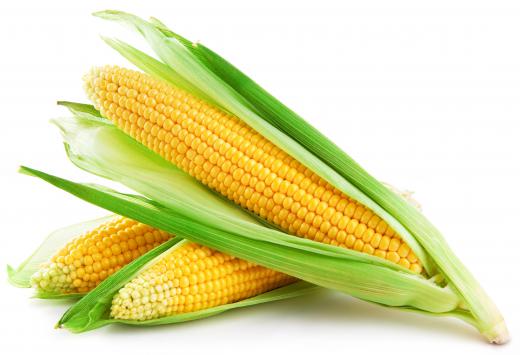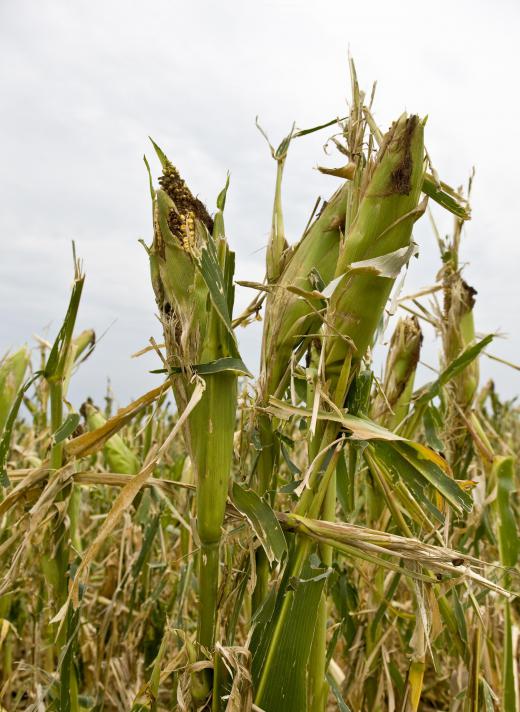What Is Maize Breeding?
Maize breeding is an attempt to genetically and environmentally enhance maize crops so that they are more resistant to disease and pests, more productive, and more tolerant of adverse weather conditions. Maize is a type of grain produced for human consumption in many forms and as a source of oil. In the US, maize is referred to most commonly as sweet corn, Indian corn, or just corn, and these terms specify varieties grown for the human diet. Other varieties of corn are also grown to feed livestock and for other commercial purposes such as in the production of high fructose corn syrup as a sugar substitute or for ethanol fuel.
There are many different varieties of maize, so maize breeding is an industry-specific process depending on the goal of the breeding program. Strains are often broken down by the level of starch that each has, with high starch varieties being grown for popcorn, such as Zea mays var. everta, and lower starch varieties being ground into corn flour for baked goods such as Zea mays var. amylacea. Programs of selective maize breeding of hybrids and genetic engineering of the species to produce strong, resistant strains is actively underway in many locations throughout Europe, the UK, and the US.

Plant breeding is an international concern for cereal crops such as maize. This is because grains are such a large component of day-to-day human and animal diets, and maize breeding is an attempt to secure the world supply as diseases and pests adapt or climate change adversely affects its growth. Two other primary areas of focus in maize breeding include drought tolerance and nitrogen resistance due to the increasing use of concentrated nitrogen fertilizers. These efforts have led to worldwide maize production outpacing all other grains, with projected levels as of 2011 of 858,000,000 tons versus 666,000,000 tons of wheat produced and 448,000,000 tons of rice.

Crops of maize are considered so important that the entire genome of the plant was mapped in 2008 by three US agencies, the National Science Foundation (NSF), US Department of Agriculture (USDA), and Department of Energy (DOE), which all have a stake in ensuring that maize crops are protected. This genetic map of 32,540 genes has been made publicly available online for international research. The ultimate goal of understanding maize genetics is to find a way of preventing harm to the crops such as is caused by the fungus Fusarium verticilliodes, which causes the kernels of maize to rot. The fungi produces fumonism, a mycotoxin so potentially harmful to humans and animals that similar fungi compounds have been implicated in cases of yellow rain, where they are suspected of being used as weapons of war in Afghanistan in the early 1980s.
The US and other North American countries of Mexico and Canada rely heavily upon maize as their primary grain crop, so maize breeding receives a lot of attention. This region of the world produces roughly half of the world maize supply. Most of this production is not targeted towards the human food supply, however. In the US, 333,000,000 tons of maize were grown in 2009. The US exports about 24% of its total grain production, while 6% is used for direct human consumption, 32% goes to industrial use, and 29% to livestock feed. The remaining 74,700,000 tons of grain surplus in the US in 2010 were held as reserve stock.
AS FEATURED ON:
AS FEATURED ON:












Discuss this Article
Post your comments